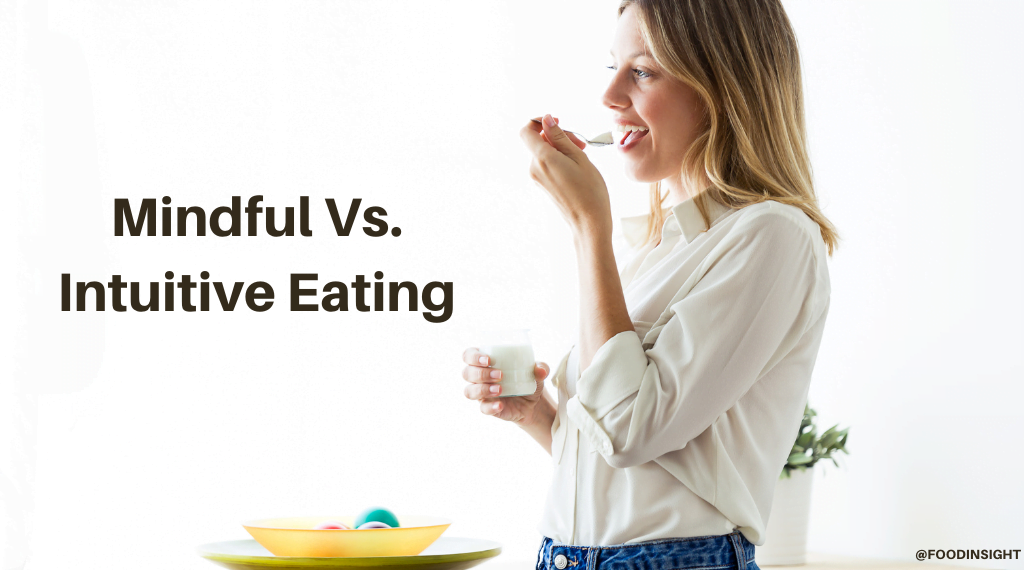As people, it’s basically impossible to separate our consuming routines from our psychological state. Our emotions, thoughts, and beliefs clearly influence our diet plan choices– for far better or for worse.
If you wish to bring more concentrated intent to your diet regimen (or disentangle yourself from harmful beliefs about food) you might wish to pursue a conscious or intuitive method to consuming.
It’s simple to think that mindful eating and Intuitive Eating are 2 terms for one concept. Nevertheless, the words “conscious” and “intuitive” are near-synonyms, and the approaches bear some similarities. However, these methods to consuming have unique histories and distinctions in everyday use.
Whether your journey takes you towards mindful or User-friendly Consuming (or a mix of both), below’s what you can anticipate.
What Is Conscious Eating?
Although mindfulness is fashionable these days, it’s rarely a brand-new idea. Concepts like non-judgment, perseverance, and living in the present moment stretch back to ancient Buddhism. It had not been up until the 20th century, though, that applying them to, say, a piece of pizza became prominent.
College of Massachusetts scientist Jon Kabat-Zinn is widely acknowledged as the starting daddy of mindfulness in the modern period. Kabat-Zinn established the Center for Mindfulness at UMass in the late 1970s. There, his popular mindfulness exercises for food (such as consuming a raisin exceptionally slowly to experience sensations using all five detects) led the way for bringing more intent to mealtimes.
As more specialists have actually accepted mindful consuming over the last few years, its fundamentals have become a lot more mainstream. However, mindful eating is not a trademarked diet plan program, and no absolute consensus exists regarding which activities or concepts specify it.
Basically, though, mindful consuming entails harnessing present-moment awareness before, throughout, and after eating. This can entail numerous practices.

Conscious Consuming Concepts
Lessening interruptions while consuming, such as switching off the television or maintaining your phone unreachable
Savoring food’s preferences and textures
Experiencing food with all five detects
Eating slowly and eating more thoroughly
Taking smaller sized bites or setting down utensils between bites
Exercising appreciation, i.e., supplying thanks before dishes
Paying very close attention to the body’s cravings and volume hints while eating
Acknowledging feelings concerning or reactions to various foods without judgment
What The Evidence States
Eating more mindfully has some proven favorable impacts (past simply aiding you enjoy your meals extra).
A big organized testimonial in the journal Consuming Behaviors found that people that obtained mindfulness training were able to reduce binge eating and psychological consuming habits.1 Other study has linked enhanced mindfulness to weight loss2 and much better self-management of type 2 diabetic issues.3.
What Is Instinctive Eating?
Where mindful consuming entails a basic application of mindfulness to diet plan, Intuitive Eating supplies a much more focused technique. In fact, though there is lots of overlap between the two approaches, Intuitive Eating is a details program that was created in the 1990s by 2 dietitians, Elyse Resch and Evelyn Tribole.
User-friendly Eating aims to free people from the boundaries of destructive beliefs concerning food (and, often, regarding themselves), with the objective of developing judgment-free eating. It shows customers to consume in response to physical hunger and satiation hints while additionally being aware of emotional eating. It assists individuals grow the capacity to notice and determine experiences of hunger, volume, and complete satisfaction as they develop in the body. The program does so by emphasizing ten core principles.4.
10 Concepts of Instinctive Consuming. The Original Intuitive Eating Pros.
10 Core Concepts of Intuitive Eating.
Deny the diet plan mindset.
Honor your hunger.
Make peace with food.
Difficulty the food authorities.
Discover the satiation element.
Feel your volume.
Deal with your emotions with generosity.
Respect your body.
Movement– feel the distinction.
Honor your health– mild nourishment.
What the Proof States.
Unlike conscious eating, Intuitive Eating addresses letting go of unsafe beliefs that might stem from past life experiences or unrealistic diet plans.
Offering on your own genuine approval to consume, not labeling foods as “excellent” or “poor,” and meeting tough feelings with self-compassion are just a few of the methods user-friendly eating can guide you toward a psychological fresh start regarding food. The program likewise motivates incorporating physical activity that brings you joy.
User-friendly Consuming is associated with higher degrees of self-esteem and lower degrees of disordered eating, body photo concerns, and psychological distress. While weight management is not a goal of User-friendly Consuming, countless studies have ended that Instinctive Consuming might be associated with reduced body mass index (BMI).5.
Body Mass Index (BMI) is an outdated, prejudiced procedure that doesn’t make up a number of variables, such as body composition, ethnic background, race, gender, and age.
In spite of being a problematic step, BMI is widely utilized today in the clinical neighborhood because it is a low-cost and fast method for evaluating possible wellness standing and results.
However also Intuitive Consuming’s founders refute the idea that the program is planned for weight loss. Rather, its objective is to re-orient your relationship with food to discover even more freedom and much less guilt.
Resch and Tribole’s program offers certifications for dietitians, psychotherapists, and various other practitioners. You can locate an user-friendly consuming counselor in your location by accessing the program’s directory site.
Exactly How Mindful and Instinctive Eating Can Work Together.
Mindful eating and Instinctive Eating are by no means mutually unique. While numerous of the User-friendly Eating concepts include features of mindfulness, practicing mindfulness does not mean that you will instantly integrate the principles of intuitive eating.
Both ideologies deal with the means our psychological state can affect our food choices, and both encourage similar activities like tuning into sensations of volume while consuming and experiencing enjoyment in dishes and snacks.
They can likewise both help reduce sensations of anxiety about food in different ways. Mindful consuming does so by restricting interruptions throughout meals, while User-friendly Consuming incorporates mindfulness and other devices to reconnect with the body while rooting out ingrained negative beliefs concerning the body and food. Making a decision whether mindful or User-friendly Eating (or both) is right for you will depend upon your objectives for your individual wellness.
If you wish to concentrate on your nourishment, as an example, you may favor to utilize conscious consuming to bring awareness to exactly how you’re fueling your body. However if your goal is to rectify an out-of-sorts connection with food, Intuitive Consuming might be a better option.


